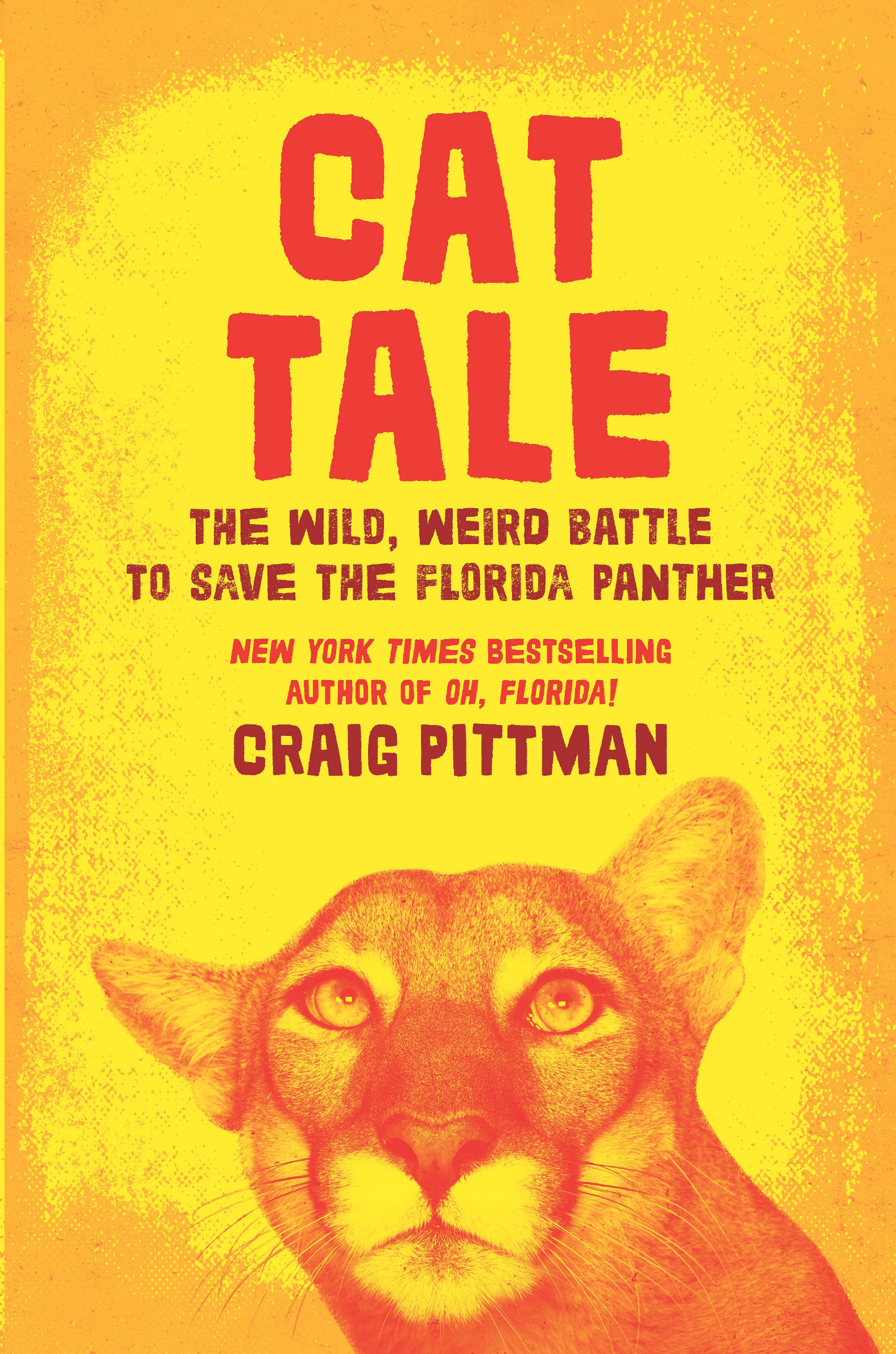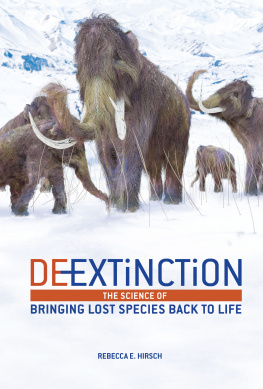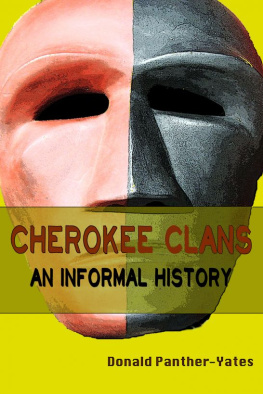
It wasnt so long ago when a lot of people thought the Florida panther was extinct. They were very nearly right. That the panther still exists at all is a miraclethe result of a desperate experiment that led to the most remarkable comeback in the history of the Endangered Species Act. And no one has told the whole storyuntil now.
With novelistic detail and an eye for the absurd, Craig Pittman recounts the extraordinary story of the people who brought the panther back from the brink of extinction, the ones who nearly pushed the species over the edge, and the cats that were caught in the middle. This being Florida, theres more than a little weirdness, too.
An engrossing narrative of wry humor, sharp writing and exhaustive reportage, Cat Tale shows what it takes to bring one species back and what unexpected costs such a decision brings.
Praise for Cat Tale
In this era of bleak environmental news, Craig Pittmans Cat Tale comes as a witty and passionate reminder that nature is robustit wants to live!and that we humans, with concerted effort, a wariness of cynicism and profiteering, and a certain ability to roll with frustration, can do a great deal to reverse the course were on.
Lauren Groff, author of Florida
Expertly navigating the wild lands and political jungle of Florida, the preeminent environmental journalist Craig Pittman reaches out and grabs his reader like a panther. And you grab back. The storysobering and stirring, mottled with irony and bits of humoris too good to let go.
Jack E. Davis, author of The Gulf
With a mixture of science, politics, personalities and the Endangered Species Act, Craig Pittman weaves an intriguing story, following the efforts to recover the Florida panther from extinction. This captivating book builds a story around the science and touched on my own experiences with defending cougars and wolves. It drew me in with its humor, frustrated me with all the bureaucracy and forcefully presented a path for those who care to join and fight back before its too late.
Jim Dutcher, coauthor of The Wisdom of Wolves
Craig Pittman has a remarkable talent for telling stories set in the Sunshine State that never fail to fascinate and entertain. Sure, Cat Tale has plenty of laughs and Florida weirdness, but Pittman has written a truly inspirational story about the panthers brush with extinction, and the human beings who were determined to save the species. You wont be able to put Cat Tale down.
Gilbert King, author of the Pulitzer Prizewinning Devil in the Grove
A fun, informative, and engaging read, Cat Tale is the definitive book on one of Americas least understood apex predators. The story of how Floridas panthers were saved from extinction is one that both deserves and needs to be told.
Dane Huckelbridge, author of No Beast So Fierce
Also by Craig Pittman
Paving Paradise
Manatee Insanity
The Scent of Scandal
Oh, Florida!
CAT TALE
THE WILD, WEIRD BATTLE
TO SAVE THE FLORIDA PANTHER
CRAIG PITTMAN

Craig Pittman is an award-winning journalist at the Tampa Bay Times and the author of the New York Times bestseller Oh, Florida!: How Americas Weirdest State Influences the Rest of the Country as well as three other books. His work has won the Waldo Proffitt Award for Distinguished Environmental Journalism in Florida four times. In 2020, he was named a Florida Literary Legend by the Florida Heritage Book Festival. Twice he has won the top investigative reporting award from the Society of Environmental Journalists, a national organization. He lives in St. Petersburg with his wife and two children.
For my dad, who introduced me to the pleasures of wandering in the Florida woods
Contents
PROLOGUE
CAT UNDER GLASS
T he panther ran as fast as it could.
The dogs gave chase, plowing through the underbrush, howling with delight. This was what they were bred to do, to sniff out and chase down big cats like this one. Their master, the tall man in the cowboy hat, would be pleased.
The female panther they pursued was a scrawny thing, seriously underweight. It wasnt strong enough to keep the chase going long. Finally it leaped onto a tree trunk and clawed its way up onto a branch, then stopped to look down.
The dogs circled the trunk, panting, their eyes trained on their quarry up above. Then the cat heard more noises approachinga group of humans, all but one of them men.
One of the men climbed partway up the tree with a gun, then raised it, and fired. The cat flinched. A dart hit it in the leg and everything went dark.
Then the cat was falling.
When it hit the ground, it didnt move again. One of the men, and then the lone woman, bent over it. They put their lips on the panthers hairy mouth, blowing their breath into its lungs, trying to revive it with mouth-to-mouth resuscitation.
They were too late.
You can find the most important Florida panther that ever lived in a glass case in the R.A. Gray Building in downtown Tallahassee. Its just a couple of floors up from a towering mastodon skeleton named Herman thats on display in the Museum of Florida History.
Tallahassee is not the place youd ever expect to see a panther. Its too far north, for one thing. For another its home to two colleges and their football teams whose fans pack the place on the weekends. Panthers prefer solitude. Sometimes they dont even like to see other panthers.
Plus its Floridas state capital, its seat of government. That means that instead of cypress trees and wild palms and thick stands of palmetto, youve got lots of marble office buildings and sidewalks and pavement and parking garages. The Gray Building looks pretty much like its name, sitting two blocks down from Floridas remarkably phallic Capitol Building, just past the far more dignified Florida Supreme Court.
The museum is low-key but impressive, what with the mastodon skeleton and other displays about Florida history. But all thats downstairs. To see the panther, youve got to ride the elevator up to the State Archives, where it stands alone outside the entrance.
The first time I saw it, I thought it was a statue. Not a very good statue, mind you. It looked like one made by an enthusiastic but unskilled amateur working with inferior materials. I figured that was why it was sitting up there away from all the other, more professional-looking exhibits.
Not until later did I realize that this had been an actual panther, a seventy-pound female that once prowled South Floridas swamps and forests, its shoulders rolling like the waves on the ocean, its tail twitching restlessly, its topaz eyes opened wide to detect any movement in the surrounding darkness.
Now it was stuffed and mounted, its limbs stiff, its eyes glass.
In different places in the Western Hemisphere, this animal goes by different names. Its all one speciespumabut its been called a cougar, a mountain lion, a catamount, even a tiger. It has adapted itself to live in a staggering variety of habitats, from desert scrub to tropical rainforest to the Hollywood sign looming high above Los Angeles.
Because this one is in Florida, its known as a panther. A Florida panther.
This cat under glass isnt just some random ratty bit of taxidermy. Its actually Floridas official state animal.
And for a time, it looked like this one would be among the last.
Two centuries ago, panthers like this one ranged across the whole American South, from the red clay hills of Georgia to the dusty plains of Texas. They were feared by the early settlers, who knew they were intruders in the panthers habitat, and knew that their own hold on the wilderness was a tenuous one.
Next page











